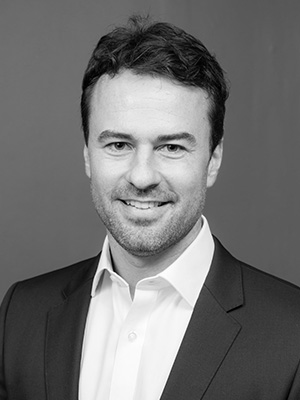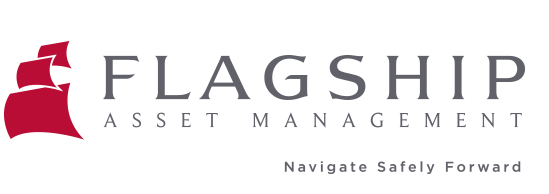
24 Aug Stocks we like or dislike in global equity markets still hitting new highs
As published in FA News on 23 Aug, 2021 by Pieter Hundersmarck & Kyle Wales
Spurred on by increasingly positive economic data, stocks continue to reach new highs in the U.S. It is easy to get caught up in market euphoria and make investments you may regret a few miles down the road in this environment. However, that does not mean all stocks are expensive, and there are a few stocks waiting to be uncovered that may prove to be the exception for those with level heads and a long-term investment horizon.
Below, Flagship Asset Management fund managers Kyle Wales and Pieter Hundersmarck give their take on which stocks to like, dislike and those they love to hate, explaining the potential upside or downside risks and what they expect from them during the second half of the year. Often the winners are not the well-known counters that are finding favour with other investors, leading to relative outperformance as their investment cases unfold.
LIKE…CAPRI
Kyle Wales likes Capri, owner of high fashion brands Michael Kors (M.K.), Versace, and Jimmy Choo. M.K. has been in decline due to over-saturation (too many stores) and over-discounting. But Wales says it is finally on the rebound due to a multi-year brand rejuvenation. “Versace and Jimmy Choo are well-known brands that are currently under-monetised, and the stock trades on a too-cheap P/E of 10 times expected 2022 earnings.”
During the second half of 2021, he expects the continued stabilisation of the M.K. brand and Versace and Jimmy Choo to continue to perform well. Should Covid lockdowns relax, the company will get an added boost from duty-free shops trading again.
On the upside, the biggest opportunity for the company is accessories, which have been underrepresented within the Versace brand. Versace is mainly a ready-to-wear (clothing) brand, and accessories (particularly handbags) present huge opportunities. Prada, a brand with a strong cache on the same lines as Versace, has generated as much as $2bn in revenue from accessories in the past – double Versace’s revenue today! Capri’s luxury goods competitors trade on 30 times earnings, which means there is potential for a re-rating as well.
The only downside risks Wales sees are that the gains in the Michael Kors brand reverse, and Versace fails to gain traction in accessories. Even then, he believes that downside risk is limited because the share price is trading at such modest multiples, namely a price-earnings ratio just a third of other luxury good competitors.
LIKE…ZALANDO
Hundersmarck likes Zalando, the largest online fashion retailer in Europe and a winner in a changing European landscape. Zalando has 45 million active customers across the 17 countries it operates in and a strong 10-year track record of taking market share from the competition. Much of its success is due to its first-mover advantage in logistics, which acts as a deterrent for new entrants, leading to lower competitive intensity. Its platform model (3P) is incredibly powerful and lucrative. He believes that Zalando has an excellent business model that could lead to it earning double-digit margins over time from its low single digits today.
Looking towards the longer term, Zalando wants to reach a gross merchant volume (GMV) of greater than €30bn by 2025 and capture greater than 10% of the European fashion market (valued at €450bn) from 3% today. They are expanding into eight markets – with a total potential market of 100m people – in the second half of 2021. This should lead to growth in gross merchandise value (GMV) of 31% to 36% in the second half of this year and operating margins of 4% to 5%. This is an improvement on the 20% to 25% GMV growth and 2% to 4% margins of the past three years.
Zalando exhibits an asymmetrical risk profile, with more upside than downside risks. On the upside, customer adoption, order frequency, the recently launched beauty initiative and their expanding footprint all present material upside risks to our investment case. Another potential upside is that beauty expands the Total Addressable Market (TAM) by €120bn over the next five years. A downside risk will be if the company misses its short-term margin guidance.
LIKE…TAKE-TWO INTERACTIVE
Hundersmarck also likes Take-Two Interactive, a video game publisher with excellent management, a wide moat of popular intellectual property (I.P.) and execution skills, as well as significant growth opportunities.
Take-Two owns or licenses the I.P. behind some of the best-selling entertainment series of all time, including Grand Theft Auto (or GTA), Red Dead Redemption and NBA 2K. GTA is the biggest and most profitable piece of media ever created. Since its release in 2013, the game has sold over 120 million units, amassing $7 billion in revenue since its debut. That makes it bigger than Star Wars and Gone with the Wind, two of the biggest media properties in history.
Hundersmarck believes Take-Two is well-positioned to pair (1) an expanding pipeline of high-quality content, with (2) best-in-class execution around developing multi-year hits to generate higher levels of growth and substantial margin expansion in the coming years. Take-Two has maintained guidance for the year in their most recent results. 2021 is a transition year for the company.
The business faces challenging comparables because time spent playing computer games exceeded that of prior years in 2020 due to COVID. Its new pipeline of content is not yet ready for prime time (including two core games that are now being shifted to later in the fiscal year), and investments tied to these initiatives are impacting margins.
For Hundersmarck, a downside risk is that, as a content business, Take-Two is exposed to the hit and miss nature of gaming. Furthermore, while transitory, headwinds from delaying game releases could weigh on the stock. As talent is an integral part of the investment case, losing that top talent presents downside risk.
DISLIKE…NASPERS/PROSUS
Hundersmarck dislikes the Naspers/Prosus groups for their unaligned business structure, “suffering from the worst example of the Agency problem I have seen in my investing career.” He sees management as enriching themselves by being passive owners of an asset they add little value to while investing the proceeds of share sales and dividends from Tencent into a swathe of internet businesses where they have shown questionable expertise. He points out that the market values the whole management team and all businesses they have been invested in at a negative number.
He foresees further shareholder destruction in the second half of this year. The Group continues to trade at an elevated discount (c. 52%) to its net asset value (NAV), despite management’s various attempts to change this by reducing its stake in Tencent, the listing of Prosus, and share buybacks. A recently announced deal will increase the free-float of Prosus and reduce the free float of Naspers. Hundersmarck expects the complexity to dilute the benefits of a greater Prosus weighting in the EuroStoxx 50.
Poor management is the greatest affliction at Naspers, he says. Downside risks are that management claims they are doing all they can to lessen the discount but have instead made it worse. Capital allocation is unproven, yet management pays themselves handsomely. There are material risks that this will continue to get worse if present management stays in place. ESG concerns around the voting structure are “massive”, says Hundersmarck, and its continued support by shareholders is “astonishing, to say the least”.
LOVE TO HATE…BRITISH AMERICAN TOBACCO
British American Tobacco (BAT) is the stock Wales most loves to hate. Although BAT is a very popular stock amongst South African investors, he doesn’t expect it to live up to expectations. The share is the eighth largest share within South Africa’s Capped SWIX Index, with a weighting of 2.8%.
The typical investment thesis for BAT is based on its high short-term dividend yield combined with it continuing to grow its earning mid-single-digits because: (1) they sell an addictive product, and (2) margins can be supported through cost-cutting. Wales says all this translates into a low double-digit total shareholder return (TSR) before any re-rating is taken into account. Other FMCG businesses are often used as multiple comparables.
Wales’ investment thesis differs in that he is sceptical about how long cigarette prices can remain inelastic to the hikes in excise duties “although admittedly I have been surprised with respect to this up to now”. He says that if one assumes negative volume growth, the TSR one can expect unravels pretty quickly. In this case, today’s high dividend yield would be more than offset by negative earnings growth, and no re-rating would be forthcoming.
In addition to this, Wales believes non-combustibles will not provide a new growth vector for the company but merely offset the decline in the combustibles business. Finally, he says regulatory risks, especially around its menthol brands in the U.S., remain high.
DISLIKE…CONSUMER STAPLE STOCKS
Hundersmarck dislikes consumer staple stocks. He says consumer names, such as Unilever, Colgate, P&G, Mondelez, Diageo and Heineken, are extremely expensive versus their own history and growth prospects. Not only are they expensive, he says, but they are highly negatively correlated to rising bond yields. “Their price-earnings multiple of 22.7x (higher than their long-run average) tells me that their quality attributes are no secret.”
The broad consumer staples universe cannot break the growth algorithm of 2% to 3% per annum in sales growth, with only minor improvements in profitability. He says: “I expect to see a continued inability on their part to pass on inflation in the prices of the goods they sell, and a continuous shift away from their products by an increasingly health-conscious consumer (e.g. away from processed foods, unhealthy snacks, beer etc.).”
These businesses are much larger than they used to be, and this, combined with their older product slate, will make them struggle to grow in the coming years.
He sees downside risks to their growth coming from emerging markets, where revenue gains in local currency can be wiped out in hard currency. Local competitors are quick to catch on to successful products and strategies, presenting stiff competition.
On the upside, while these stocks are trading at expensive levels, the companies own top quality brands, have geographically diverse operations, deliver high profitability, attract the best management teams and generate large amounts of free cash flow. They have also been around for a long time (although in a different form), implying a high level of resilience.
CAUTIOUS OF…RECENT IPOS
Wales is cautious about the recent IPOs in a hot market. One example he cites is the IPOs of retail stock brokerages, including Didi Chuxing and Robin Hood. He says that fundamental to Flagship’s investment philosophy is that the price of a share today must be justified by its future earnings potential. “I don’t see how many of these stocks can live up to the market’s expectations. Investors should bear in mind two things: firstly, people IPO businesses because they think they can get a good price for themselves (and not necessarily a good one for outside investors). Secondly, the people IPOing a business know far more about it than outside investors do.”
About Pieter Hundersmarck:
Pieter is a fund manager and member of Flagship’s global investments team.
Pieter has been investing internationally for over 13 years. Prior to Flagship, he worked at Coronation Fund Managers for 10 years in the Global and Global Emerging Markets teams, and also co-managed a global equities boutique at Old Mutual Investment Group. Pieter holds a BCom (Economics) from Stellenbosch University and an MSc Finance from Nyenrode Universiteit in the Netherlands.




















